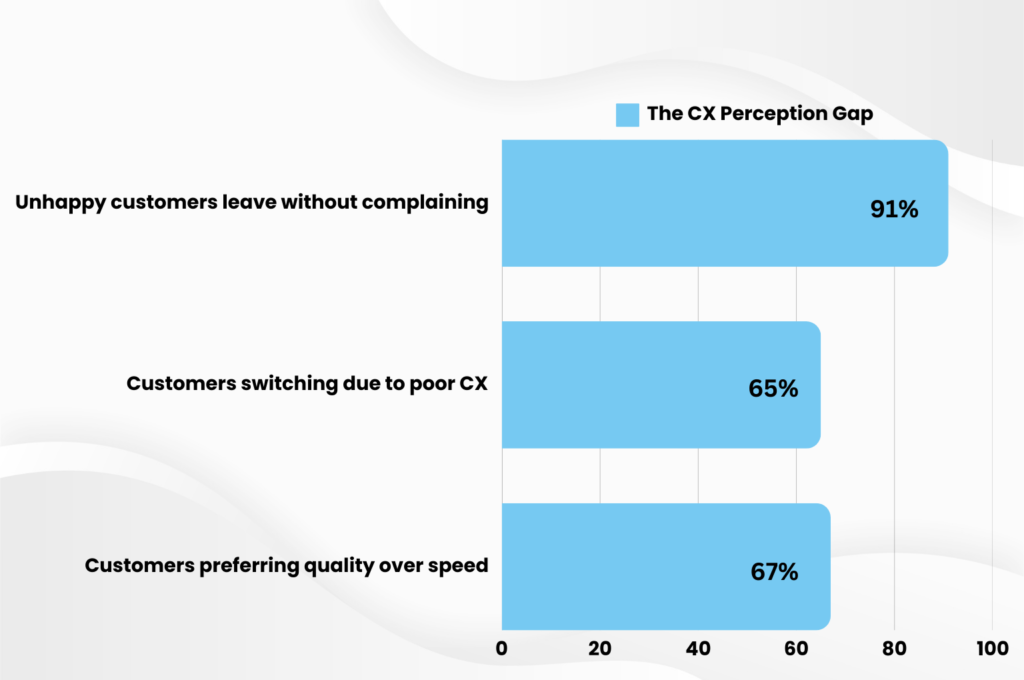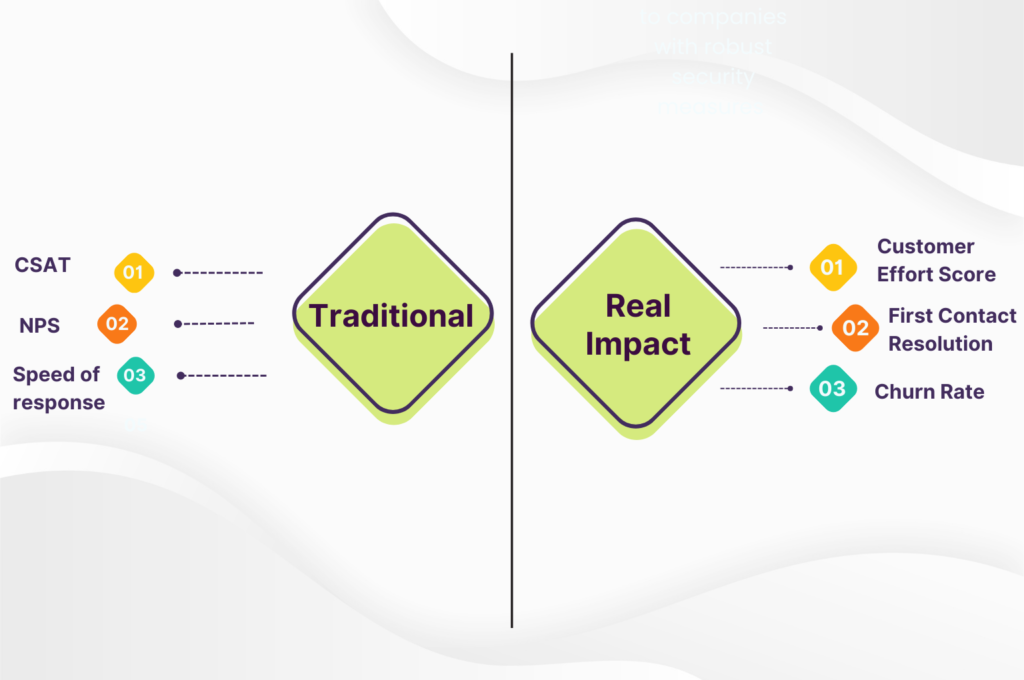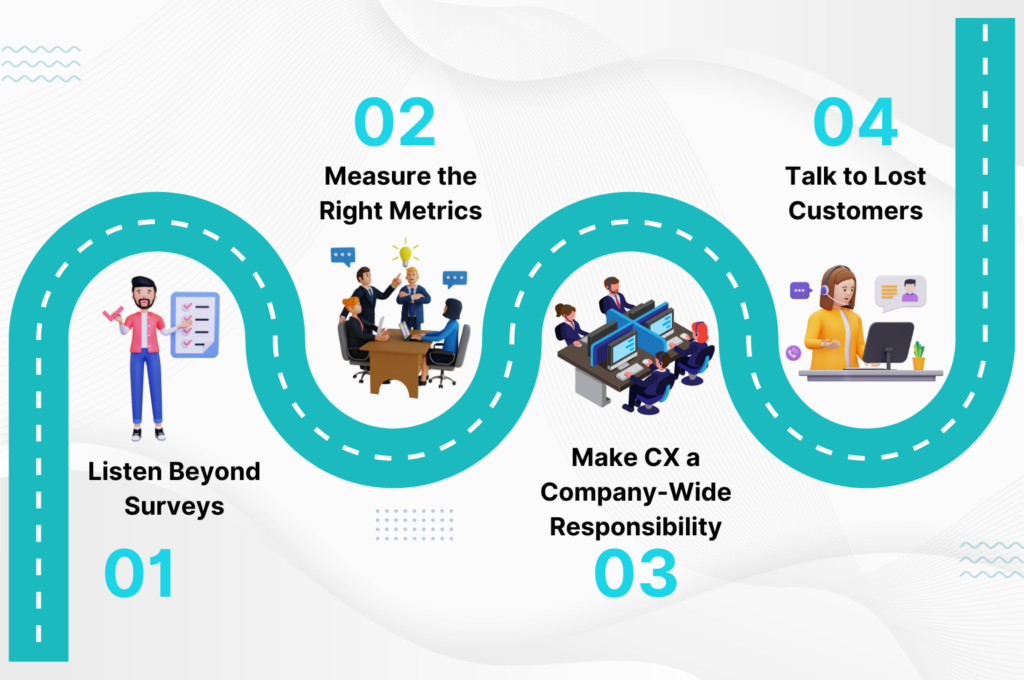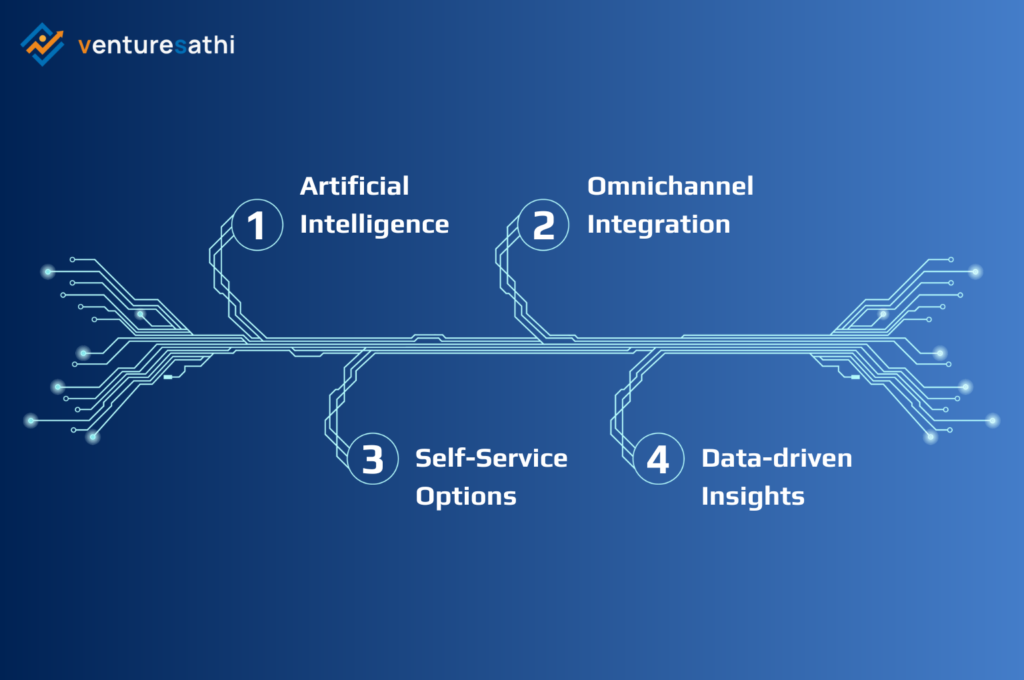
Every company believes they deliver an excellent customer experience (CX). They have high satisfaction scores, their internal teams report positive feedback, and their service operations seem efficient.
Yet, customers leave. Complaints increase. Engagement drops. So, where’s the disconnect?
This is the Customer Experience Illusion—the gap between how businesses perceive their service quality and how customers experience it. Let’s break down why this occurs, the hidden blind spots, and how to bridge the perception gap to create a truly customer-centric business.
This blog explores how companies can bridge the gap between perceived efficiency and actual customer experience by leveraging outsourced back-office services to reduce costs, streamline workflows, and enhance operational efficiency.
Why Companies Misjudge Their CX Performance
- They Measure What’s Easy, Not What Matters
Traditional CX metrics like Customer Satisfaction Score (CSAT) and Net Promoter Score (NPS) provide a snapshot of customer sentiment, but they don’t tell the full story
For example: A customer might rate a service as “good” but still switch to a competitor due to small frustrations that build up over time.
Companies often prioritize feel-good numbers over deep customer insights. This leads to CX blindness, where leadership assumes customers are happy because the reported scores look positive.
- Customers Don’t Always Complain they Just Leave
Many businesses assume that a lack of complaints means customers are satisfied. But silence isn’t always a sign of happiness, it can be a warning sign.
Kolsky research shows that 91% of unhappy customers leave without complaining.
Without proactive engagement, businesses fail to identify dissatisfaction early, leading to unexpected churn.
- Internal Perception ≠ Customer Reality
Companies often evaluate CX based on internal feedback from their teams. But employees see processes from an inside-out perspective, while customers experience them from the outside-in.
This disconnects leads to blind spots, where businesses assume:
- If a process works internally, it works for customers.
- If employees report positive experiences, customers must feel the same.
- If no major complaints arise, everything is fine.
The truth? Customers don’t care about internal efficiency. They care about effortless, seamless experiences.

The Hidden CX Blind Spots
- “No Complaints” Doesn’t Mean Satisfaction
A silent customer base can be dangerous. Businesses should shift from reactive to proactive listening by:
- Conducting exit surveys for lost customers.
- Analyzing customer behavior trends instead of relying solely on feedback forms.
- Using social listening tools to monitor customer sentiment beyond direct complaints.
Ignoring these blind spots leads to low engagement, declining retention, and missed opportunities to improve CX
- Focusing on Speed Over Quality
Many companies prioritize fast response times, if quicker resolutions mean better service. However, research suggests: A fast but ineffective resolution is worse than a slower, well-handled one.
CX teams should focus on solving the problem right the first time rather than just responding quickly. Speed matters—but accuracy and empathy matter more.
- Assuming Loyalty is Guaranteed
Just because customers have been with a company for years doesn’t mean they are satisfied. Loyalty isn’t a contract—it’s a choice customers make every day.
According to a research, Companies lose $1.6 trillion per year due to customer churn.

How to Bridge the Perception Gap
- Listen Beyond Surveys
Instead of just relying on NPS and CSAT, businesses must analyze real customer behavior.
Strategies to dig deeper:
- Track repeat complaints and unresolved issues.
- Monitor customer support interactions for frustration signals.
- Use churn analytics to understand exit trends.
Customers may not always say they’re unhappy, but their actions reveal the truth.
- Measure the Right Metrics
Many companies track generic satisfaction scores but fail to measure effort and effectiveness.
Key CX metrics that matter:
- Customer Effort Score (CES): Measures how easy it is for customers to get their issue resolved. Lower effort = higher satisfaction.
- First Contact Resolution (FCR): Tracks how often customer issues are resolved in the first interaction.
These metrics show actual experience quality rather than just surface-level satisfaction.
- Make CX a Company-Wide Responsibility
CX isn’t just the responsibility of customer support teams. Every department impacts the customer journey.
Steps to embed CX across the organization:
- Product Teams: Design with usability in mind, considering real customer pain points.
- Marketing Teams: Ensure messaging aligns with actual service quality.
- Operations Teams: Optimize processes to reduce friction and inefficiencies.
When CX becomes a shared mission, customer satisfaction improves organically.
- Talk to Lost Customers
Most businesses conduct exit interviews for employees but not for customers. Lost customers hold the most valuable insights and engaging with them can reveal:
- Recurring frustrations that weren’t addressed.
- Unspoken reasons why they left.
- Opportunities for service improvement.
Companies that make the effort to win back lost customers often find they become even more loyal than before.

The Reality Check: Are You Truly Meeting Customer Expectations?
The businesses that succeed in CX aren’t the ones with the highest survey scores, they are the ones that actively identify blind spots and close the gap between perception and reality. While high survey ratings may seem like an indicator of success, they often mask the deeper issues that prevent companies from delivering exceptional CX. The businesses that excel are the ones that go beyond surface-level metrics and actively seek out the blind spots, uncovering the gap between how they perceive their service quality and how their customers actually experience it.
This phenomenon what we call the Customer Experience Illusion, leads to an insidious cycle where companies believe they’re excelling, yet customer retention begins to slip. When a company’s internal CX ratings are high but its customer churn rate rises, it’s a red flag. The problem isn’t with the customers or their expectations; the issue lies in the way success is being measured and perceived within the company.
If your company is committed to delivering excellent customer experiences, it’s essential to face the truth about where your CX strategy stands. Are you truly creating experiences that delight customers, or are you simply fulfilling a perception of success based on outdated metrics?


